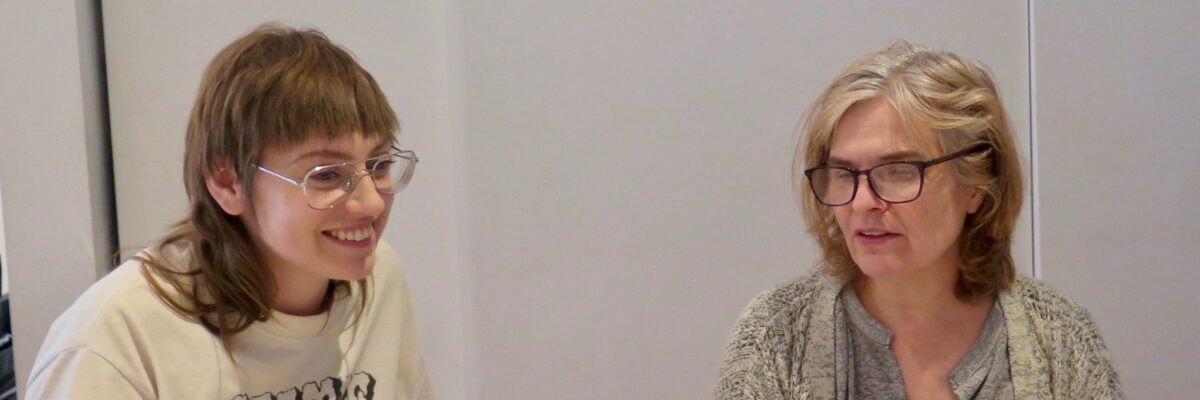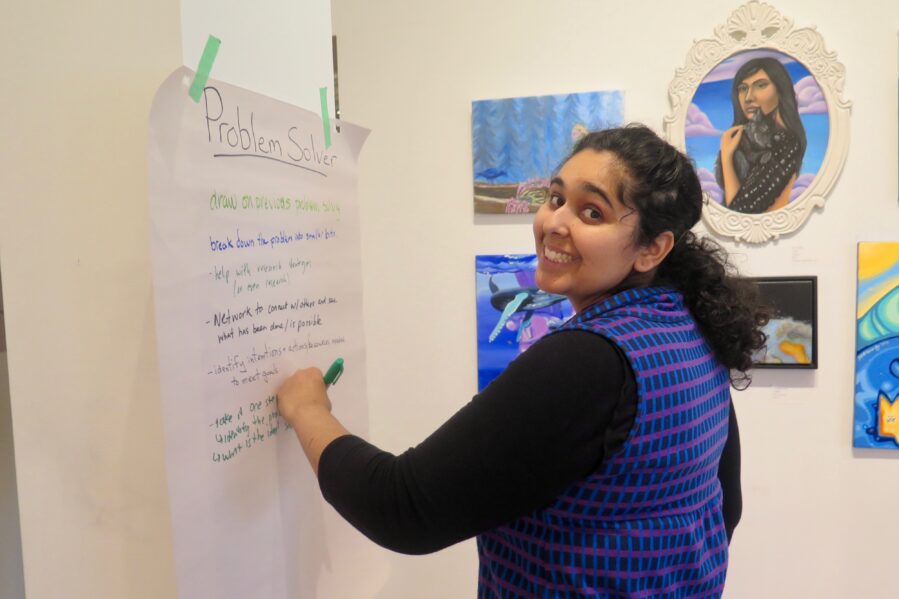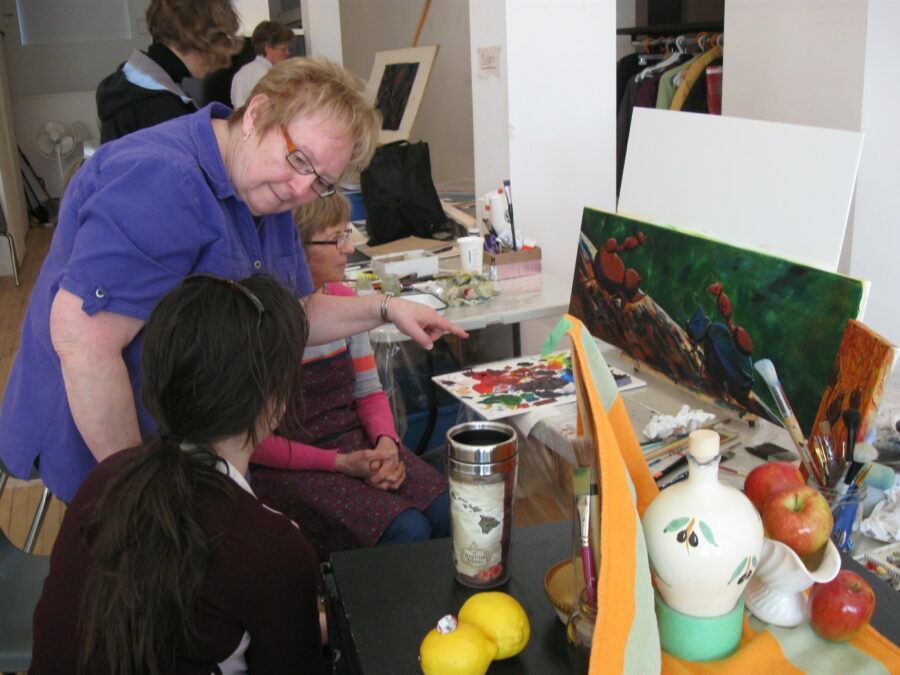How to Mentor

Jillian Groening and Mentor Brenna George
What do mentors do? Mentors model professionalism, competence, confidence, ethical behaviour, dependability and collegiality. Mentors offer personal acceptance and professional endorsement. Mentors critique by praising what is working and questioning what is not. Mentors teach by sharing skills, technique and suggestions.
A mentoring relationship works when:
- the mentor has the ability and resources to help in practical ways
- the interactions are challenging and fun
- the relationship provides inspiration and motivation for the mentee
- the relationship is active (both parties are engaged)
- there is strong compatibility between parties
A mentoring relationship doesn’t work when:
- the purpose of the relationship lacks focus
- contact is infrequent
- either party is unprepared for meetings
- parameters are lacking or not respected
- the mentor and mentee are incompatible

Mentor Gurpreet Sehra
How to mentor:
- model your best, most professional self
- use yourself as an example where appropriate (consider how much self-disclosure you are comfortable with)
- narrate the growth and development of the mentee
- expect excellence
- provide appropriate expectations that challenge
- be affirming
- address laziness, lack of attention to detail, lack of rigor
- be specific in your criticisms
- pass on information and opportunities
- share access to your networks
- advocate on behalf of the mentee to other professionals in the field
- protect the mentee when necessary (point out consequences of decisions)
- be caring
- LISTEN, show interest, give excellent attention and time
- maintain confidentiality
- make it fun!
Some notes on offering feedback:
- be timely (often in early stages of a work, a detailed critique is not helpful)
- be specific; concentrate on the observable; use examples ( in a visual arts critique, consider technique, materials, formal elements (scale, line, colour, etc.), affect, conceptual content, relationship between the artwork and art history, relationship between the artwork and contemporary culture, and whether the piece realizes the mentee’s intentions)
- do not use personalized or emotional wording (such as “you always” or “it is bad”)
- offer alternatives
- affirm strengths
- acknowledge the mentee’s fears and challenges but do not accept that they are insurmountable
- beware of setting expectations too low or setting expectations of perfection (learning demands mistakes)
“Mentorship taught me I don’t have to be someone who I think I’m supposed to be, but who I am. It showed me what I needed to learn so I could refine what I was doing. For a long time, I just didn’t understand why certain work was exhibited and certain work was left out. Now I have an idea. I have an idea of what I need to understand about who I am in the context of contemporary art. And that’s really empowering. It has given me confidence to navigate the world of a professional artist.”
– Kelly Ruth
Roles a mentor can play
At an impasse? Think of the different roles a mentor can play. Change your approach if what you are doing is not working.
Resource
share information; share opportunities; share professional networks; suggest research materials; offer own experience as example
Teacher
share a technique or skill; offer constructive critique
Trusted Listener
be a sounding board; repeat what you are hearing so that your mentee can hear themself; validate and question; maintain confidentiality
Collaborator
create beside each other or on the same piece ideally in a low stakes situation (a great exercise for unlocking blocks)
Problem Solver
point out what isn’t working and suggest paths forward; share “shortcuts” you have learned; break problems down into components so they don’t seem insurmountable
Advocate
tell others about your mentee and their work
Facilitator
introduce your mentee to other artists and curators; introduce your mentee to fabricators and materials suppliers; go to art events with your mentee (help create space for them within the larger community)
Coach
help set deadlines and goals; help keep your mentee accountable to their goals; expect excellence; inspire

Mentor Shirley Brown
When problems arise
When things go wrong, take steps to improve the situation:
- slow things down
- assess the situation
- address the conflict
- be honest
- practice self-care (both parties)
- hold yourself accountable
- be mindful of the power imbalance (usually the mentor is being paid and has much more professional experience and status than the mentee)
- seek consultation
Common causes of conflict:
- poor match
- faulty communication
- unrealistic expectations
- abandonment and neglect
- mentor incompetence (technically or relationally)
- boundary violations (can include exploitation, problematic attraction)
- unresolved disputes
See a list of ingredients for effective and ineffective mentorships or download the word document.

